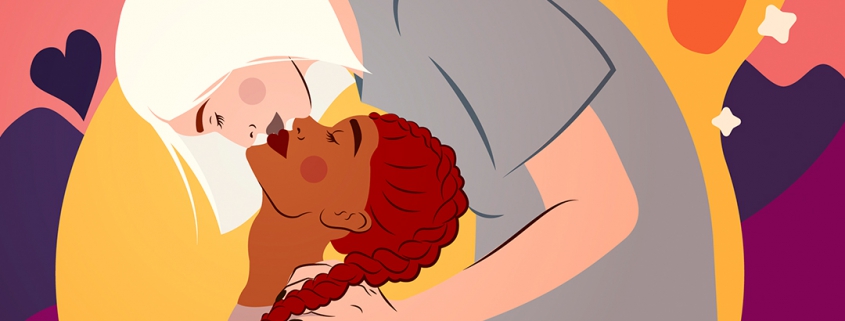Lesbian
Lesbian is a term most widely used in the English language to describe sexual and romantic desire between females.[1] The word may be used as a noun, to refer to women who identify themselves or who are characterized by others as having the primary attribute of female homosexuality, or as an adjective, to describe characteristics of an object or activity related to female same-sex desire.[2]
Lesbian as a concept, used to differentiate women with a shared sexual orientation, is a 20th-century construct. Throughout history, women have not had the freedom or independence to pursue homosexual relationships as men have, but neither have they met the harsh punishment in some societies as homosexual men. Instead, lesbian relationships have often been regarded as harmless and incomparable to heterosexual ones unless the participants attempted to assert privileges traditionally enjoyed by men. As a result, little in history has been documented to give an accurate description of how female homosexuality has been expressed. When early sexologists in the late 19th century began to categorize and describe homosexual behavior, hampered by a lack of knowledge about lesbianism or women’s sexuality, they distinguished lesbians as women who did not adhere to female gender roles and designated them mentally ill.
Women in homosexual relationships responded to this designation either by hiding their personal lives or accepting the label of outcast and creating a subculture and identity that developed in Europe and the United States. Following World War II, during a period of social repression when governments actively persecuted homosexuals, women developed networks to socialize with and educate each other. Greater economic and social freedom allowed women gradually to be able to determine how they could form relationships and families. With second wave feminism and growth of scholarship in women’s history and sexuality in the 20th century, the definition of lesbian broadened, sparking a debate about sexual desire as the major component to define what a lesbian is. Women generally exhibit greater sexual fluidity than men and find it easier to become physically and emotionally intimate with other women. Some women who engage in homosexual behavior may reject the lesbian identity entirely, refusing to identify themselves as lesbian or bisexual. Other women may adopt a lesbian identity for political reasons. Greater understanding of women’s sexuality has led to three components to identifying lesbians: sexual behavior, sexual desire, or sexual identity.
Portrayals of lesbians in the media suggest that Western society at large has been simultaneously intrigued and threatened by women who challenge feminine gender roles, and fascinated and appalled with women who are romantically involved with other women. Women who adopt a lesbian identity share experiences that form an outlook similar to an ethnic identity: as homosexuals, they are unified by the discrimination and potential rejection they face from their families, friends, and others. As women, they face concerns separate from men. Lesbians may encounter distinct physical or mental health concerns. Political conditions and social attitudes also affect the formation of lesbian relationships and families.


Leave a Reply
Want to join the discussion?Feel free to contribute!